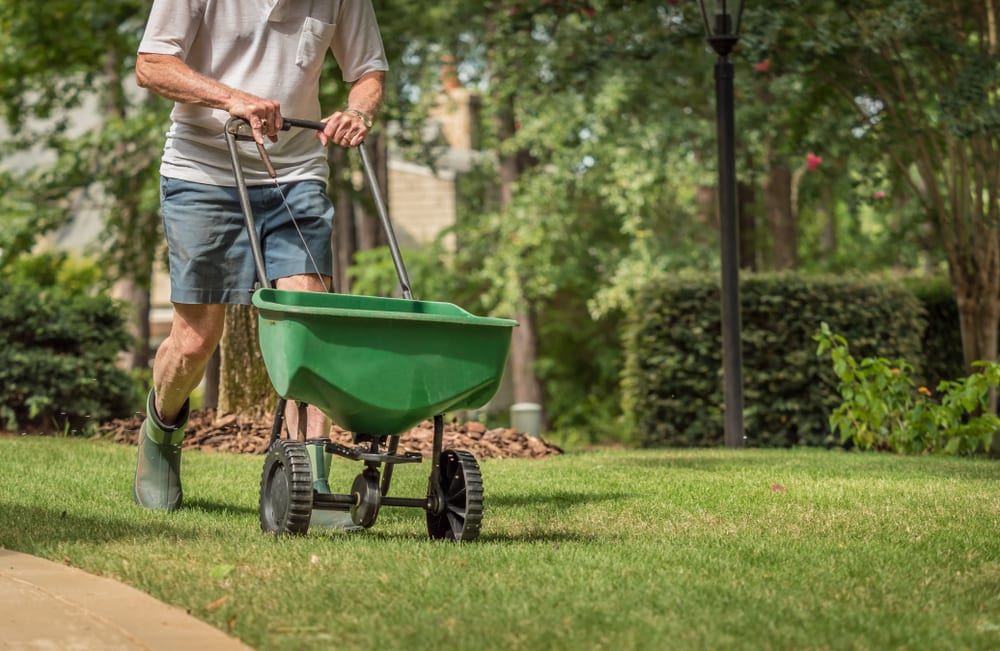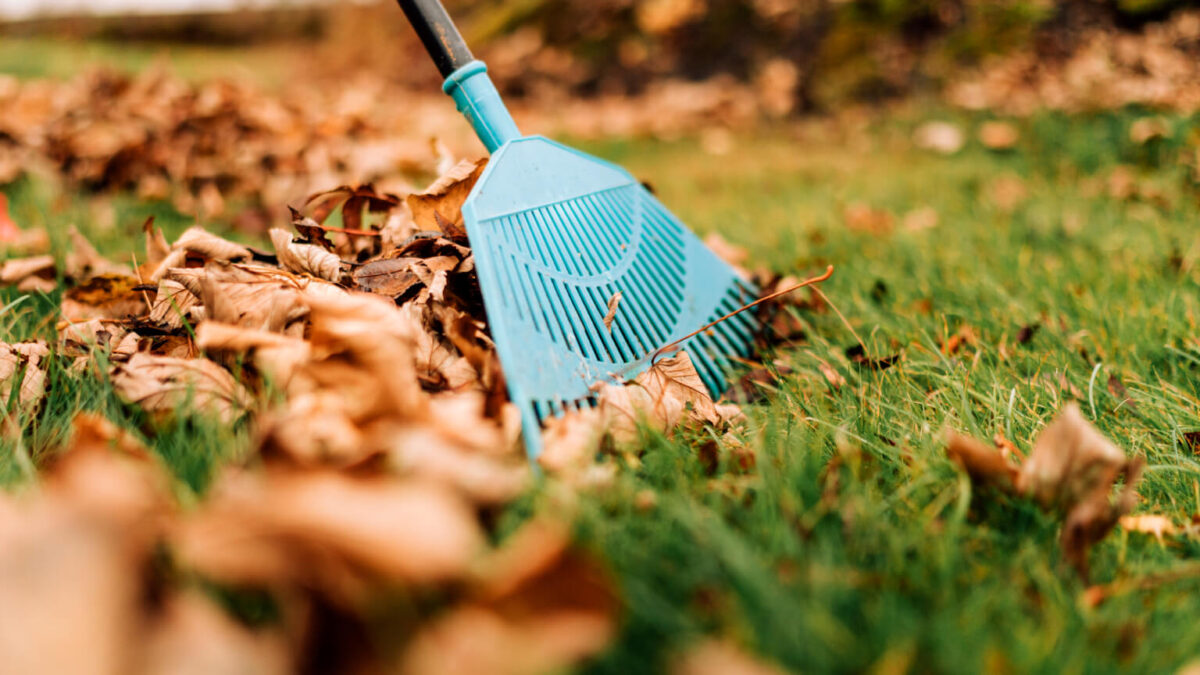When to Fertilize Your Lawn and Other Fertilizer Tips

If you’re seeking that perfect green grass, you’ll likely need to invest in lawn fertilizer at some point. Trying to figure out how often and when to fertilize your lawn can be tricky. Despite their best efforts, many people find themselves struggling to get their lawns to sprout while their neighbors have grass that’s full and verdant.
And if you’re trying to sell your home, having a green lawn is especially important. In fact, one study from Homelight found that lawn care is the most effective curb appeal project, and spending under $300 in lawn care services can have up to a 352 percent return on investment.
So, how do you maximize the impact of fertilization? Getting a lawn fertilizer schedule right can depend on a variety of factors, including your type of grass, your climate, and your specific fertilizer. But have no fear — with some research and dedication, you can figure out the right formula for happy grass. Here are some tips on how and when to fertilize your lawn, so it looks great for most of the year.
Signs your lawn needs fertilizing
Figuring when to fertilize your lawn may seem like a guessing game, but your grass is giving you visual clues all the time about what it needs. The following signs that it may be time to fertilize your lawn may seem obvious, but it’s important not to overlook them.
- Slower growth: If you know it’s growing season for your type of grass, it might be a sign you need lawn fertilizer.
- Blades are turning yellow: Some grasses can turn yellow or brown from too little watering, but it may also be a sign the grass is missing some nutrients, specifically phosphorous.
- Changing seasons: If you know the growing season is around the corner, it may be time to fertilize. Typically, spring is the time for that first feeding.
When to fertilize your lawn
As mentioned earlier, the general rule of thumb is that spring is one of the best times to fertilize your lawn. In most areas of the U.S., the first feeding works best in mid-late April, as it sets the stage for strong roots and is close to the start of the warmer season. But if you need some serious help to get your grass up to par, some experts suggest starting your fertilization schedule as early as February with a grass fertilizer designed specifically for cooler weather.
These, however, are just general rules. You also want to factor in whether you have warm-season or cool-season grass. Warm-season grasses enjoy temperatures between 80-95 degrees Fahrenheit and go dormant in the wintertime, which could last between three and five months. Some of these grasses include Bermuda, St. Augustine, Bahia, and Centipede. They prefer to be fed early and late, but not too much during the direct heat of summer. With warm-season grass, plan an early spring feeding, a late spring feeding, and then a late summer feeding.
Cool-season grasses include: Bentgrass, Kentucky bluegrass, fescue, and ryegrass, among others, and prefer temperatures between 60-75 degrees Fahrenheit. They grow year-round, except for in mid and late winter months. For these grass types, the general rule for their lawn fertilizer schedule is to feed twice in the fall (around September and November), then in spring, and then after the first major growth spurt.
As far as when not to fertilize your lawn, avoid mid-day during hot months, as the fertilizer could burn the grass. Apply fertilizer in the morning to take advantage of early morning dew, which allows for good absorption. Avoid evening fertilizing, as leaving watered fertilizer on the grass overnight can lead to fungus growth.
Create (and follow) a lawn fertilizer schedule
Making a schedule helps keep you on track to fertilize at the right times. Incorporate it as part of your overall lawn care plan, which should also include watering, weed maintenance, how low or high to mow the grass. Keep a plan for the entire year and break it down by season. It’s also important to review and adjust your lawn fertilizer schedule yearly, as some general rules will work for your specific lawn, and others may not.
How to fertilize your lawn correctly, step by step
Now that you have an idea of when, how often, and what time of day you should fertilize your lawn, here’s how to do the job.
Step 1: Choose the right fertilizer
You’ll need to do some research. Fertilizers have three primary ingredients: nitrogen, phosphorous, and potassium, but have other compounds that might influence how your grass receives nutrients. You have slow and quick-release treatments, liquid, pellets, and organic fertilizers as well.
Step 2: Prepare your tools
Like any job, you’ll need to know what tools are required to apply your grass fertilizer. It can depend on the size of your lawn and the type of fertilizer you choose. See our list below of tools you’ll need to get complete the job.
Step 3: Look at the weather forecast
Now that you’ve chosen the right fertilizer for the time of year and invested in the right tools, check the weather. Look for days with moderate temperatures where there are windows of time without rain. Some people don’t mind fertilizing shortly after a rain, too.
Step 4: Water a day or two before fertilizing
Ideally, you want the grass a little damp before fertilizing, but don’t overwater as it could dilute and wash away nutrients and contribute to fungus growth.
Step 5: Fertilizing and post-watering
Apply grass fertilizer using tools from the list. If you’re using a broadcast or rotary spreader, start on the outside of the lawn and work your way in. You can overlap slightly to make sure you cover every surface. After applying, give the lawn a light watering to encourage nutrients to absorb. Post-application watering is critical. Don’t skip that step.
Step 6: Check your schedule
After all your research on climate and grass type, your year-long schedule should be in place. Start preparing for the next round. Make notes about what you’ve learned and add them to your lawn fertilizer schedule.
Step 7: Adjust as needed
There are a lot of general rules for warm weather and cold weather grasses, but some people live in transitional areas of the country where you may see both types of grass. Look for visual clues and adjust your schedule and processes for how to fertilize your lawn as needed.
What you’ll need for the job
Fertilizing a lawn is relatively easy to DIY, but it does require some tools:
- Broadcast spreader
- Hand-held spreader
- Garden hose
- Sprinkler (for watering)
- The right fertilizer for the season and your grass type
Frequently asked questions
How many times do you fertilize your lawn?
It can vary by region, climate, and grass type. Start by researching your specific grass, then look at your climate and create a schedule.
Can I fertilize after mowing the lawn?
Yes, and leave behind a small amount of grass clippings, which will release nitrogen into the grass. Just make sure to water it after fertilizing and avoid the peak heat of the day, which can cause burning, or into the evening, which could lead to fungal growth.
What’s the best fertilizer for my lawn?
Many manufacturers create products for specific seasons and times of the year. Fertilizers contain three primary ingredients: nitrogen, phosphorous, and potassium. It’s best to study your grass type, take a soil sample, and research recommendations for your grass, area, and soil condition.



